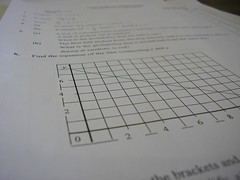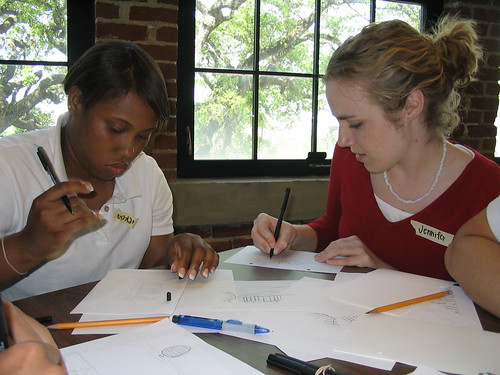You can use all of the lessons right out of the box or easily adapt them to fit your needs. Once you’ve read about them — and hopefully incorporated some of them into your curriculum — why not share a few of your own lessons on the Project Reimagined resource library?
Tale of Electricity. Fourth graders from Hardin County Schools in Kentucky researched, solved, engineered and presented solutions to electricity-related problems in this engaging, multidimensional project created by Jamie Chenault.
To set the tone, Chenault began by holding inspiring “kitchen table discussions” using prompts, such as the Thomas Edison quote, “I haven’t failed. I have just found 10,000 ways that do not work.”
Then students got to work, using Instagrok, a tool that creates interactive concept maps to research the principles of electricity. When they type in a topic, Instagrok creates a mind map to help them organize and make sense of the vast information available.
Next, Chenault gave students a collection of materials, including some that wouldn’t work, and asked them to complete as many circuits as they could. Students solved problems related to circuits, static electricity and switches.
Bearing in mind the Edison quote about perseverance, students recorded their successes and troubles and documented the process with photos and videos. Later, groups publish their results using Storyjumper, a tool that creates illustrated books that can be printed or shared online.
Chenault evaluated students using a rubric that measured individual progress as well as group contributions.
This project clearly addresses standards across multiple disciplines, including literacy, science and engineering, language arts, and potentially mathematics. It also clearly addresses the ISTE Standards for Students, as students collaborate on creative solutions to problems as well as presentation strategies.
I like that this project involves a rigorous approach to hands-on learning and is accessible to all levels of learners. You can expand the connectivity by challenging other classes from other schools, states or countries to solve electricity problems your students present and vice-versa.
Discover French Regions. This project, which combines French language learning with research and presentation skills, was a collaboration between French teacher Laura Rouse and library specialist Tina Laramie from Vernon-Verona-Sherrill High School in New York.
Students navigated Moodle to find and organize information, used multiple languages to create an advertisement for a specific region in France, and learned to find, evaluate and critique digital resources related to their region.
For example, students learned not to be “DUPED” by the internet, an acronym that reminds them to check the date, URL and purpose of a site and then evaluate whether it meets their purpose. After learning to evaluate websites, students examined four sites related to the project according to the criteria.
Rouse and Laramie assessed their students based on a rubric that measured student progress during the project as well as overall mastery of specific goals.
This project addresses multiple standards in both language arts and literacy, including:
- Determining central ideas or themes of a text and analyzing their development (CCSS).
- Summarizing key supporting details and ideas and assessing how point of view or purpose shapes the content and style of a text (CCSS).
- Creativity and Innovation (ISTE Standards for Students).
- Research and Information Fluency (ISTE Standards for Students).
- Critical Thinking and Problem Solving (ISTE Standards for Students).
This project goes a long way toward teaching students how to find and evaluate the information they need to solve problems. It is also wonderfully versatile in that it can be adapted for just about any discipline. You can bring mathematics in by having students investigate and report on the geometry of certain landmarks in a country connected to a world language they are studying. They could take it a step further by producing multi-language presentations to exchange with students in those countries for feedback.
Collaborate 21 Amazing Animals. This group project involved having second graders read, research, write and publish what they learned about habitats and animals. It was designed by tech integration specialist Jana Gudmundsen, teacher Sarah Kastner, library media specialist Rochelle Kovarik and principal Brenda Nilson from Park River Area Elementary School in North Dakota.
Students began by researching an animal’s habitat study, followed by doing a book study of an established author to build background for exploration of habitats and animals. They learned the research and writing process before compiling and presenting their findings.
The students worked in small groups using Padlet, a virtual bulletin board, to communicate how their animal interacts in its habitat and with other animals. Then they created a Puppet Pals video that highlighted their animals’ interactions within its habitat.
This well-researched and designed project addresses multiple standards:
- Reading for understanding, writing, speaking and listening (CCSS).
- Observing plants and animals to compare the diversity of life in different habitats forms the backbone of the specific content (Next Generation Science Standards).
- Creativity and Innovation (ISTE Standards for Students).
- Research and Information Fluency (ISTE Standards for Students).
- Promote and model digital citizenship and responsibility (ISTE Standards for Teachers).
This is another fantastically flexible project. The reading, writing and publishing aspects could be a template for projects across disciplines and grade levels.
Modern Julius Caesar. Beth Crawford from Kenton Ridge High School in Springfield, Ohio, immersed her students in the language and culture of Julius Caesar by connecting the famous play to current world events.
She began by flipping her classroom. She had students watch a video at home in which she drew connections between Julius Caesar and modern-day real and fictional characters, such as Harry Potter, Vladimir Putin and Barack Obama. In the video she poses thought-provoking questions and then asks her students to answer in a shared Google Doc.
Students then created a modern version of one scene using Touchcast. The project received an international audience because Touchcast published the student work in the “educreations” section of its newsletter.
Although this project was created for advanced 10th grade students, the process of connecting a classic work to modern life can be applied to just about any work in any grade.
This project addressed many standards, including:
- Exploring written text for deeper meaning, analyzing characters in a work, and producing clear and coherent writing (CCSS).
- Creativity and Innovation (ISTE Standards for Students).
If your students are studying Julius Caesar, wouldn’t it be awesome to join forces with Crawford’s class and do a different scene? In fact, what if enough readers reimagined the entire play? Picture classes all over the world seeing Julius Caesar through the lens of their own world and combining their revisions with others. Come on, give it a try. Reach out to Beth Crawford on Twitter.
Programmable Night Light. Need a good night’s sleep? Maybe all you need is your own nightlight. David Held created a project that had his students designing 3D nightlights, printing them on 3D printers and then programming them. The project teaches design principles, programming, electronics and engineering.
Students used a free 3D design software, such as Tinkercad, 123D Design orProject Shapeshifter, to create their design, produce it on a 3D printer and install electronic components.
Students created their nightlights for a “proposed user,” which prompted them to imagine how to meet the needs of that specific client. They also demonstrated knowledge of hardware, software and design, using mathematics and technology skills in the process.
This project addresses a wide range of standards, including:
- Modeling (CCSS).
- Solving algebraic equations (CCSS).
- Representing vector and matrix quantities (CCSS).
- Solving real-life problems using algebraic structures (CCSS).
- Integrating and presenting knowledge and ideas (CCSS).
- Creativity and Innovation (ISTE Standards for Students).
- Communication and Collaboration (ISTE Standards for Students).
- Critical Thinking, Problem Solving and Decision Making (ISTE Standards for Students).
If ever there was a clear project that put the A in STEAM, this is it!
I’ve barely scratched the surface of what these amazing projects hold for your students. And there are more where these came from on the Project ReimaginED community!
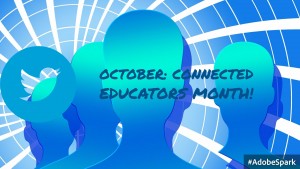 Sometimes it seems like a teacher is alone in their classroom, struggling to connect with students over difficult topics. Recently, I saw a post from an AP Calculus teacher on a Facebook group that illustrated one value of being connected. “I muffed the lesson on derivatives of inverse functions”, it read, “does anyone have a great suggestion for me when I redo it?” At last count, nearly 20 other educators weighed in with activities, exercises and encouragement. Yesterday, a tweet came across my twitter feed about a blog post concerning the use of document cameras in the classroom. Intrigued, I followed the thread to the post; although the blog was from 2012, it rang true for today as well. I gained insights from someone I was not connected to, yet I felt connected through the person on Twitter whom I follow.
Sometimes it seems like a teacher is alone in their classroom, struggling to connect with students over difficult topics. Recently, I saw a post from an AP Calculus teacher on a Facebook group that illustrated one value of being connected. “I muffed the lesson on derivatives of inverse functions”, it read, “does anyone have a great suggestion for me when I redo it?” At last count, nearly 20 other educators weighed in with activities, exercises and encouragement. Yesterday, a tweet came across my twitter feed about a blog post concerning the use of document cameras in the classroom. Intrigued, I followed the thread to the post; although the blog was from 2012, it rang true for today as well. I gained insights from someone I was not connected to, yet I felt connected through the person on Twitter whom I follow.
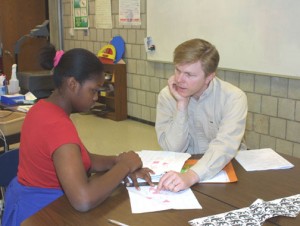 As you might’ve read in a previous post (
As you might’ve read in a previous post (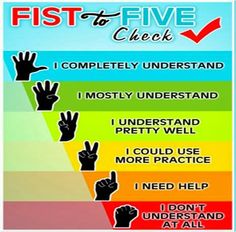 asking students to simply rate their confidence with the topic at the end of class; using Socrative (see www.socrative.com) to ask a couple of key exit questions (can also use googleforms for this); and using journaling or discussion questions on the LMS to find out what students are thinking about their learning. There are simpler versions of this, of course, including ‘fist to five’ rating system of comfort or self-assessment of progress
asking students to simply rate their confidence with the topic at the end of class; using Socrative (see www.socrative.com) to ask a couple of key exit questions (can also use googleforms for this); and using journaling or discussion questions on the LMS to find out what students are thinking about their learning. There are simpler versions of this, of course, including ‘fist to five’ rating system of comfort or self-assessment of progress 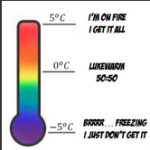 Put a ‘learning thermometer’ in the classroom and ask students to put
Put a ‘learning thermometer’ in the classroom and ask students to put 
 ed an email from The Bill and Melinda Gates Foundation inviting me to the fifth convening of Elevating and Celebrating Effective Teaching and Teachers (ECET²). I had never heard of this, and to be honest, thought the email was either a mistake or a hoax. What, I asked myself, had I accomplished in my teaching that would make me worthy of such an invitation? I know that I have a lot of experience, but I am the kind of person and teacher that looks with awe and wonder at what others can do without giving my own work much credit. After three intense days with the ECET2 community,that is now changed!
ed an email from The Bill and Melinda Gates Foundation inviting me to the fifth convening of Elevating and Celebrating Effective Teaching and Teachers (ECET²). I had never heard of this, and to be honest, thought the email was either a mistake or a hoax. What, I asked myself, had I accomplished in my teaching that would make me worthy of such an invitation? I know that I have a lot of experience, but I am the kind of person and teacher that looks with awe and wonder at what others can do without giving my own work much credit. After three intense days with the ECET2 community,that is now changed!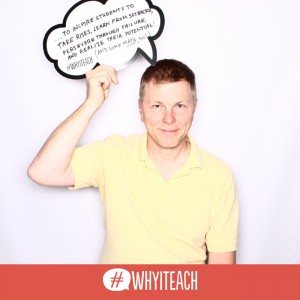
 r actual use. Students use mathematical modeling to make sense of data, research issues affecting oyster populations, use oysters in farming and report on the plight of the oysters in Chesapeake Bay. Don’t live near the eastern shore? That’s fine. What’s great about this lesson is how easily you can adapt it to other species, environments and settings. This project addresses a long list of standards, both Common Core and ISTE. These include the
r actual use. Students use mathematical modeling to make sense of data, research issues affecting oyster populations, use oysters in farming and report on the plight of the oysters in Chesapeake Bay. Don’t live near the eastern shore? That’s fine. What’s great about this lesson is how easily you can adapt it to other species, environments and settings. This project addresses a long list of standards, both Common Core and ISTE. These include the 